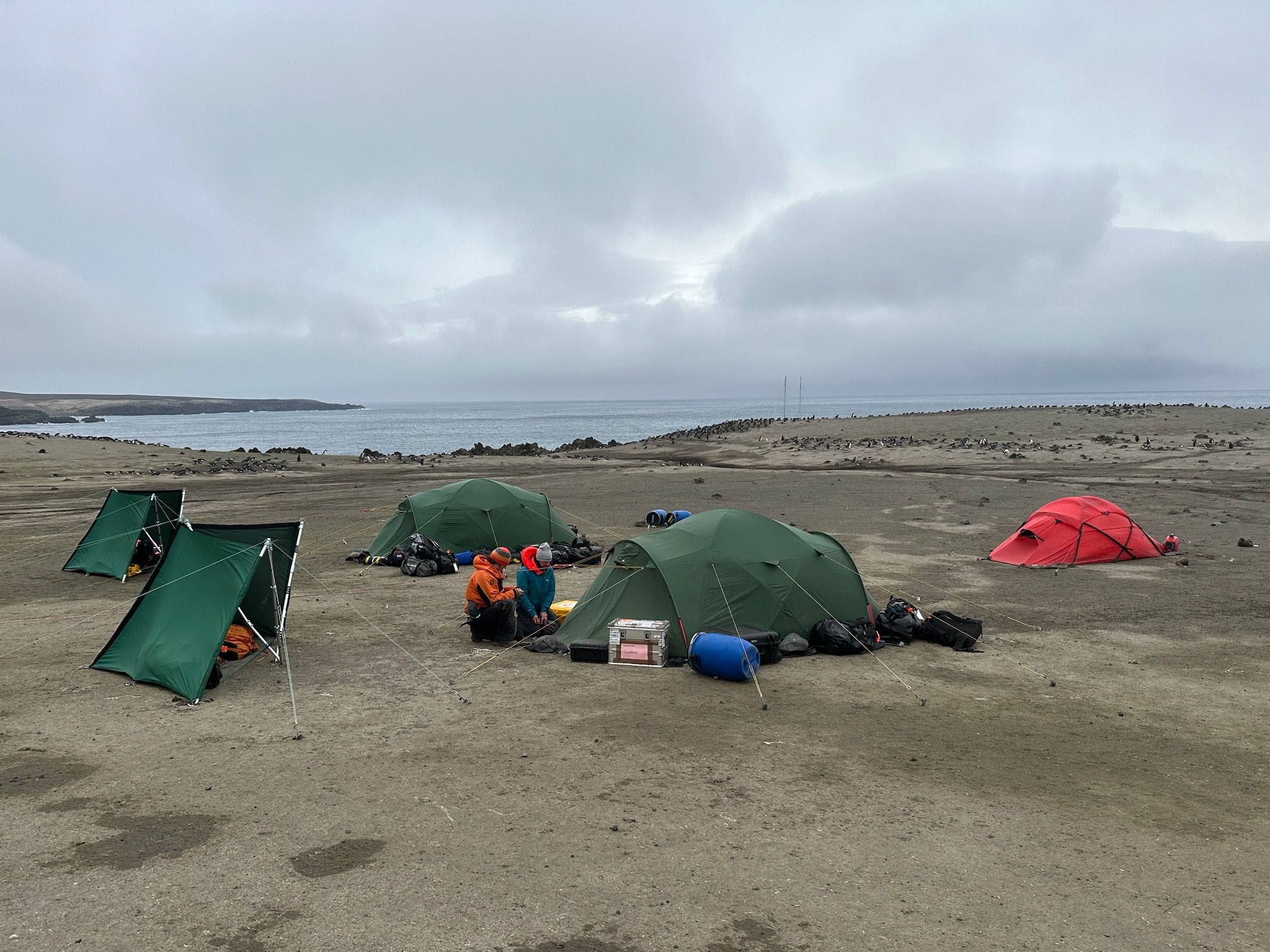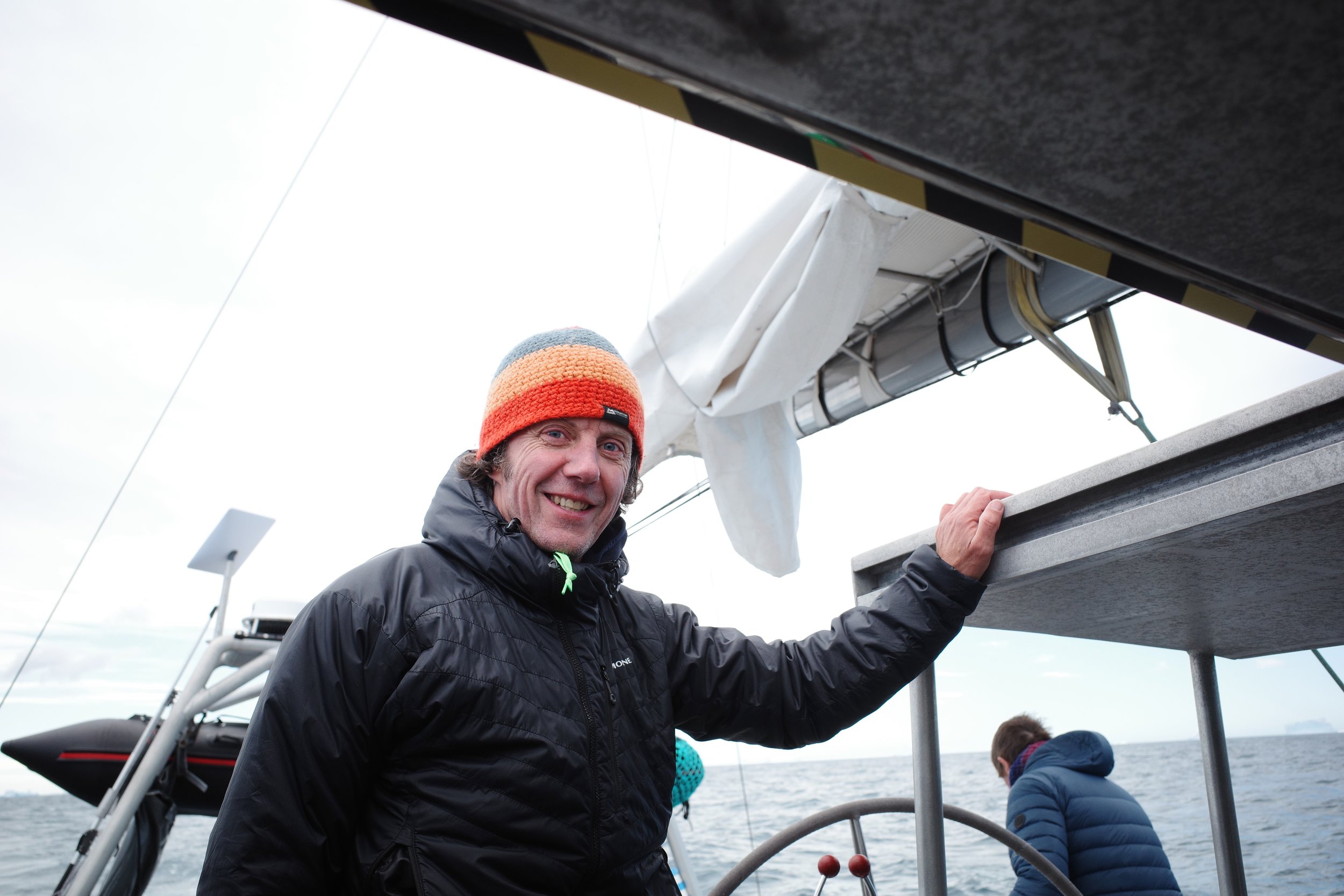Zavodovski Expedition. Base camp logistics.
After many seasons as a Field Guide for the British Antarctic Survey assisting science projects on the continent of Antarctica, when the chance came to join the 2023 Zavodovski Expedition to the South Sandwich Islands and sail there on the yacht Vinson of Antarctica, I jumped at the chance.
The role of a Field Guide for BAS is many fold but one of the main requirements is to keep all members of the team safe in glaciated and mountaineering terrain a long way from help. There were no glaciers on Zavodovski (aside from very small areas that we were not be to visiting) so it would be a simple project with little for me to do, right?
I’d seen pictures of the previous Zavodovski trip earlier in the year. There was blue sky, stunning scenery, sunshine, amazing wildlife and lots of busy science work. It was bound to be the same this time.
Having sailed from the Falkland Islands to South Georgia the outlook forecast was not promising. Rather than head straight to Zavodovski we found ourselves sailing straight past it and 200miles further South to Thule (the southernmost of the S Sandwich islands) to wait out bad weather. Once the storm abated we were able to travel back North again to Zavodovski.
Travelling light!! – just some of the cargo for the project.
It was with slight trepidation that team members climbed over the side of the yacht into what looked like a very small dingy, rising and falling on the swell, to be ferried ashore. Waves were crashing and the cliffs surrounding the landing area looked daunting. However, it wasn’t long before the experienced crew had us all safely ashore with all our kit. We set up camp at the location Skip had used earlier in the year on the last trip in the full knowledge that we were expecting bad weather the next day. We battened everything down in expectation of the blow.
First campsite
By 04:00 the wind was rising, and I was out of the tent and checking camp. Tightening guylines and ensuring all cargo on the tent valance was firmly attached. Not long later I could hear Skip out and about doing the same. By now there were windblown particles of ash and rock pummelling the tent in the strong gusts. But the tents seemed solid as long as the wind did not rise much more.
Storm in the first camp. Video from John Dickens
By 06:00 I was getting concerned for the tents. Outside it was hard to stand in the gusts. Goggles were necessary to see anything in the windblown dust and rocks. Several guylines had already ripped off one of the tents, then one of the custom-made windbreaks built to shelter the tents collapsed when the 30cm pegs pulled out of the ground. John was now up and I sent him to search the lower ground nearer the coast for a more sheltered location. By around 08:00 a cramped but more sheltered spot had been identified and a decision taken to relocate the entire camp. This was not going to be easy! (we later discovered the winds at this time were gusting around 60kts). In the strongest gust being bombarded by gravel and pebbles the only option was to cease what you were doing and lie with your back to the wind till the gust past.
Video from John Dickens
The rest of the day passed with a huge team effort from everyone. Jobs that could normally be done by one, such as taking the tents down now required 4 people. We pitched our spare emergency tents first in the new sheltered spot and slowly transferred all our living equipment, food, fuel, water supplies and science cargo to the new camp being careful that nothing was lost or blown off the island. It was around 1500 before the new camp was established and we were in a position to take a break. No one had had anything to eat or drink so far and energy levels were low.
At 1700 we were out again finished the camp move. It was a very tired, but relieved team that settled into the new tents for a late dinner around 2000 and then sleep.
The new more sheltered camp site
By mid morning Tuesday the wind had abated enough for folk to venture out. Our late arrival onto the island had already eaten into available science time massively so there was a need to make the best of the available time. Nicole and Skip headed South to take volcanic ash samples from a site she had identified last trip. John and Gemma started the Penguin work in the colonies close to camp. Retrieving trackers placed on penguins previously, collecting poo samples and putting new GPS trackers on both the Macaroni and Chinstrap penguins. I joined Claudia, heading North, searching for lichens, moss and insect life.
This routine continued for the rest of the week. Everyone up early and trying to prioritise the remaining jobs based on the forecast for the day, which we received regularly from the crew on the yacht. Low cloud over the volcano put paid to the flying a drone over the summit and strong winds hampered much of the other drone work intended to help assess penguin counts, but there was still much else that could be achieved.
As a non-scientist I tried to help where, ever I could. Learning how and where to look for lichens, keeping an eye open for warm soils heated by the volcano or just assisting in carrying science kit around the island.
Back in camp there was still much to be done. Scientists had to dry, store and package their samples, and re-charge drone batteries and write up all their notes. I would busy myself with other camp management tasks. Bringing more 25litre jerry cans of drinking water and petrol for the generators up from the landing zone to our camp and returning the empty ones. (In spells of better weather, the yacht crew would then retrieve the empty jerries back to the yacht and bring more fresh water ashore for us. There was no drinkable water on the island.) Refilling the generators and keeping them running for charging requirements. Constantly checking tents, pegs and guylines and adding extra rocks to the tent valances. Cooking meals, filling flasks and waterbottles and washing up so the scientists could focus on their work. Though the new camp was much more sheltered we still had a night with more windblown ash pummelling the tents in gusts.
Thursday finally promised a day of light winds. Final checks of battery levels and equipment were made Wednesday night then folk tried to get a good nights sleep. John was out flying the drone by 04:00 with everyone else up not long after. 9-5 really doesnt exist on trips like this! You make maximum use of the good spells when they appear.
Unfortunately we all already had an eye on our withdrawal from the island. That news came on Friday eve as we checked in to find the latest weather with Chris the skipper of Vinson. We would need to have everything back on the yacht by midday Saturday.
Of course, we woke to our first rain of the trip on Saturday. We started packing up while the crew of the yacht readied the dingy to retrieve us. Even the order of getting kit off the island needs careful consideration. You can’t just take all the tents down drain the now un-needed water jerries and send everything back in a random order. At any instant the wind/swell could get up making extraction from the island impossible. Its therefor essential that a minimum out of tents, water food and survival equipment are held ashore to the last moment to come back with the last two people off the island.
Even back aboard the yacht the work was far from done. Every single bag and piece of equipment needed hosing down with the jet wash and cleaning in Virkon solution before it could be stored below decks. This is a standard part of biosecurity measures when visiting sites like this to avoid non-native species getting on/off the island. This was made even more imperative this year due to concerns around avian bird flu.
As the winds rapidly picked up to unworkable levels for landing the small boats it was a very tired but relieved team that sat finally below decks for a much needed lunch.
Much science was achieved, bad weather endured, new friendships formed in just 6 nights ashore. A very intense week.
Thanks to Skip and the yacht crew, Chris, Tor, Marianna, Justino, who kept us safe and made it all possible and the science team of John, Gemma, Nicole and Claudia for always facing such adversity with a smile and working so hard to maximise the science achieved. Plus, a thought for Andreas who was meant to be with us on the island but had to leave the yacht while we were at King Edward Point, on South Georgia. Your company was missed.
Ian Hey
BAS Field Guide







